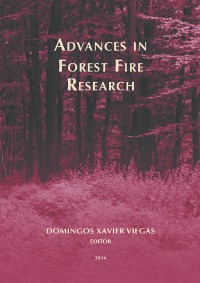Please use this identifier to cite or link to this item:
https://hdl.handle.net/10316.2/34285| DC Field | Value | Language |
|---|---|---|
| dc.contributor.author | Park, HoungSek | |
| dc.contributor.author | Lee, Si-Young | |
| dc.contributor.author | Kwon, Chun-geun | |
| dc.contributor.author | Yeom, Chan-ho | |
| dc.date.accessioned | 2014-10-23T16:33:13Z | |
| dc.date.accessioned | 2020-09-09T21:31:13Z | - |
| dc.date.available | 2014-10-23T16:33:13Z | |
| dc.date.available | 2020-09-09T21:31:13Z | - |
| dc.date.issued | 2014 | - |
| dc.identifier.isbn | 978-989-26-0884-6 | |
| dc.identifier.uri | https://hdl.handle.net/10316.2/34285 | - |
| dc.description.abstract | Facilities in wildland-urban interface were main causes of forest fire ignition or protection objects from forest fire. In Korea, many facilities-for example, ancient temples and pensions-lied in wildland-urban interface and suffered from forest fire extremely. For preventing forest fire damage to these facilities, Korea national government designated the wildland-urban interface, which was located within 30m from forest. In this study, we established some manuals which were resulted from analysis of damaged facilities records in Korea and referred other management tool-FIREWISE and FIRESMART for estimation of the forest fire danger rating around these facilities and a protection of the life and the property. The manual was consisted by two parts. One was related by environment factors (forest species, forest density, slope, a distance from forest and etc.) and another by artificial factors (a condition of road, distance from forest fire attack agency, distance from water source and etc). Theme maps were made by this factor which was graded by this manual and analyzed using ARCGis 9.3. The map was made on three districts (Kyeongjoo-Si, Uljin-Gun and Bongwha-Gun) in Keongsangbuk-Do and the resolution was 10m. In mapping and analyzing, we graded these factors and classified according to this grade rule using G.I.S tool. In results, the forest fire danger rate in Uljin-Gun and Bonghwa-Gun was much higher than Kyungjoo-Si. Because of Coniferous forest, the forest fire danger rate in Uljin-Gun and Bonghwa-Gun was much higher than Kyungjoo-Si. And forest fire danger rates related with artificial condition in Uljin-Gun and Bonghwa-Gun much higher than that in Kyungjoo-Si. | eng |
| dc.language.iso | eng | - |
| dc.publisher | Imprensa da Universidade de Coimbra | por |
| dc.relation.ispartof | http://hdl.handle.net/10316.2/34013 | por |
| dc.rights | open access | - |
| dc.subject | Wildland-urban interface | eng |
| dc.subject | Forest fire danger map | eng |
| dc.subject | GIS | eng |
| dc.subject | Forest fire danger zone | eng |
| dc.title | The development of forest fire danger mapping method for wildland urban interface in Korea | por |
| dc.type | bookPart | por |
| uc.publication.firstPage | 979 | - |
| uc.publication.lastPage | 983 | - |
| uc.publication.location | Coimbra | por |
| dc.identifier.doi | 10.14195/978-989-26-0884-6_106 | - |
| uc.publication.section | Chapter 3 - Fire Management | por |
| uc.publication.digCollection | PB | por |
| uc.publication.orderno | 106 | - |
| uc.publication.area | Ciências da Engenharia e Tecnologias | por |
| uc.publication.bookTitle | Advances in forest fire research | - |
| uc.publication.manifest | https://dl.uc.pt/json/iiif/10316.2/34285/211303/manifest?manifest=/json/iiif/10316.2/34285/211303/manifest | - |
| uc.publication.thumbnail | https://dl.uc.pt/retrieve/11172140 | - |
| uc.publication.parentItemId | 53868 | - |
| uc.itemId | 70265 | - |
| item.grantfulltext | open | - |
| item.fulltext | With Fulltext | - |
| Appears in Collections: | Advances in forest fire research | |
Files in This Item:
| File | Description | Size | Format | |
|---|---|---|---|---|
| 978-989-26-0884-6_106.pdf | 1.5 MB | Adobe PDF |  |
Items in DSpace are protected by copyright, with all rights reserved, unless otherwise indicated.
